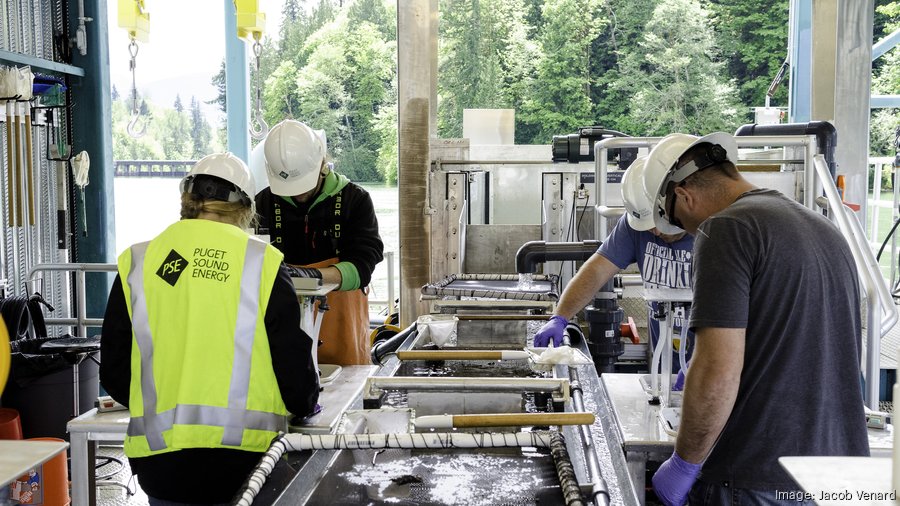Listen to this article 4 min
This year, the Puget Sound Business Journal debuted the Environmental and Sustainability Awards program to recognize Washington businesses that are making meaningful steps toward emissions reduction and climate stewardship.
You may be familiar with a fish ladder like the one that allows salmon to make their way through the Ballard Locks. But what about a fish taxi?
That’s what Puget Sound Energy employs to help salmon get around the mammoth Baker River Dam in Skagit County.
The program cost $170 million to deploy and involves catching baby and adult salmon, transporting them in trucks around the dam, and releasing them to the waters above and below. It has helped revive the Baker River sockeye population from just 99 adult fish that succeeded in traversing the dam in 1985 to the 65,000 that made the journey in the fall of 2022.
That’s just one example of the programs that have garnered PSE national recognition for its environmental stewardship.
“An important aspect of operational excellence is holding ourselves accountable and fostering trust,” said PSE Director of Communications Christina Donegan.
The company, which is the largest utility in the state, plans to eliminate coal from its energy mix by the end of next year. By the end of the decade, it aims to cut 80% of carbon emissions from its energy production and 100% of emissions from its company operations. Its transition to 100% renewable and non-emitting electrical supply is earmarked for completion in 2045.
Puget Sound Energy
- Headquarters: Bellevue
- Employees: 3,300
- Customers: 1.2 million electric, 900,000 natural gas
- Award: Operational Excellence
That means investing in renewable energy sources, such as the company’s new Beaver Creek wind farm in Montana. The project is expected to generate enough capacity to power 83,000 homes when it comes online next year.
Additionally, PSE began including locally produced natural gas made from organic waste into its system nearly 30 years ago. Since then, the company has been part of many initiatives to identify cleaner alternative fuel sources.
In 2021, PSE conducted its first hydrogen blending pilot at its Georgetown training facility in Seattle, and added a second pilot in Tacoma a year later. In 2023, the Pacific Northwest Hydrogen Association, of which PSE is a member, was awarded federal funding to develop a hydrogen hub to supply difficult-to-electrify heavy industry customers.
A big part of PSE’s strategy involves encouraging customers to reduce their energy consumption. Energy efficiency programs, like the one that encourages people to run high-energy appliances during off-peak hours, have netted a reduction of 1.2 billion kilowatt-hours across its grid.
Now, it's asking customers for their input. The utility sent out a targeted electrification assessment for 10,000 customers that will help it find the best incentives to encourage the adoption of more efficient technologies, such as electric heat pumps.
But it will need to ensure the future supply of energy for customers is stable and reliable, even when demand goes up during heat waves and cold snaps, as it moves away from quick-fire sources like coal. Forecasts for the energy that will require are only going higher as more people buy electric vehicles and new fully electric buildings come online, Donegan said.
“We have a lot to do,” she said, “and our planet cannot wait.”





